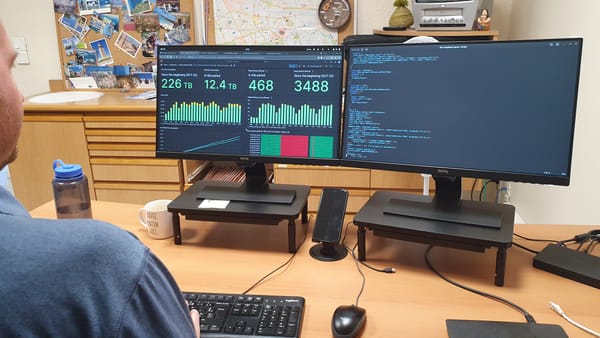Choosing the right solution to provide connectivity in an emergency situation is part of the main skills of TSF. In this article we share with you 6 criteria to consider when you plan your response in telecoms.
The first subtlety lies in the word "emergency". There are different phases in an emergency response. We will study the 3 cases with which we are most familiar: First Response, Relief phase and Recovery phase. You'll see that the criteria are very similar, and we'll try to make you aware of the nuances associated with these phases.
And because we're so subtle, here's a second subtlety: there is no single solution that will meet all your needs and requirements at any given time. You always have to balance the characteristics of each solution to choose the right one. This article looks at what you put in this (virtual) balance.
First Response
Short term (a few days to a few weeks)
In this phase, we consider that the most important is to get a usable bandwidth as fast as possible on the right location. This will support coordination and enable affected people to contact their loved ones as soon as possible after the disaster.
Once we know the characteristics of the need, like the number of people who will need to connect, and what kind of usage they will have, our solution will be a balance between available bandwidth and:
- Service availability. First, and especially if you’re using satellite connectivity, first check the coverage and the availability of the service
- Ease of transport. In the first days after a disaster, logistics is very likely to be a challenge. Check that you have the logistical resources to transport your connectivity solution.
- Power. As the power may be sparse and unstable, protect your equipment and identify alternative power sources (solar panels, car battery…)
- Cost. Of course! Look at the expected number of people connected and their use. Depending on the solution you choose, you may be billed according to the volume of data consumed. Be careful!
- National regulations / Presence of national distributors. Depending on the solution you choose, this can be a sine qua non condition.
- Light and easy monitoring. In this phase we mainly concentrate on essential data to prioritize the availability of the service. If you have a light solution to get an overview of the connectivity, be able to remote check on its status, it’s good, but keep it simple!
It’s not strictly a selection criterion, however don’t forget the distribution of your connectivity: how many people will need access simultaneously? Will you cover 1 location or more?
Relief phase
Mid term (a few weeks to a few months)
In the Relief phase you need reliable connectivity to support the emergency operations that can last up to several months depending on the situation.
The constraints are similar to the First Response, however you have more room to tweak them to provide a better service.
- Service availability. This is still present, but you may have more time to study available options, and maybe more options will be available after a few weeks.
- Durability and maintenance needs. In the Relief phase the logistical constraints will decrease. However if your solution has to stay in place for a few months, you have to think about maintenance needs. Do you need to plan regular visits or check-ups? Is the equipment properly secured?
- Power. You can still experiment with power troubles, but here too you will probably be able to find stabilization or interruption prevention systems.
- Cost. Same idea as previously. Study carefully the way your consumption is billed. Monthly subscriptions are probably safer than volume-based ones, especially if you have more places to equip!
- National regulations / Presence of national distributors. A national distributor will be of great help for local supplies or if you need spare parts for example.
- More elaborate monitoring. Depending on your needs, it may be useful to set up an automated (or semi-automated) monitoring system.
The remark on the distribution is still valid. For this phase, you may have to connect more places, maybe larger teams. If you have a solid backhaul and 2 nearby offices, you can consider using a Wi-Fi bridge with a single connection device to decrease subscription costs.
Recovery phase
Longer term (several months to several years)
If you are planning for a longer-term mission, the question is slightly different. You will have more options available, of different types that you’ll have to study to compare prices, feasibility, maintenance…
- Services available: what kind of services are available in your area ? Mobile coverage, fixed connections? Or are you out of coverage so you have to use satellite connectivity?
- Distribution. In a long-term operation, the distribution is an integral part of your connectivity.
- Maintenance. In a probably more complex system, an efficient maintenance process is key to a successful connectivity!
- Cost. As we are now planning for the long-term, the costs have to be carefully studied in parallel to the available services.
- National regulations / Presence of national distributors. No need to emphasize that it should have become a reflex now!
- Monitoring. On a wider system, a good monitoring system will increase the efficiency of the problem-resolution process and make the maintenance more efficient.
What other criteria would you take into account?











Member discussion